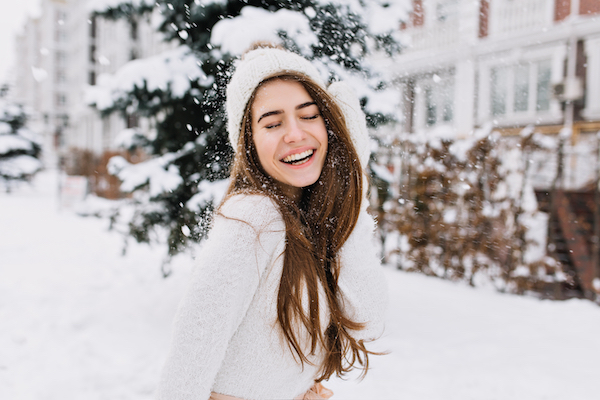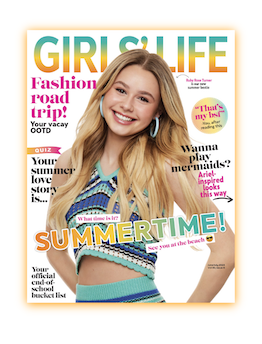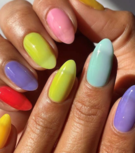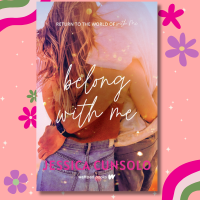STYLE
Beauty
5 ways to *really* help your hair this winter

Save your strands, even when it's sub-zero.
As soon as the temps dip below 50, it's like your hair goes completely insane. It's not as soft or as shiny, you've got a million split ends and don't even think about air-drying—your coif will just end up a frizzy mess. Winter hair is the worst and, as it turns out, there's actually a specific reason for it.
"When it gets cold, there is less humidity. So the dry, chilly air sucks the hydration from your hair, which makes it feel less manageable," says celeb hairstylist Ona Diaz-Santin. Yep, you can legit blame your strand sitch on the weather, but good hair days *can* still happen before spring. Here's what the experts have to say...
The Issue: Frizz & Static
Why it's happening: Just like those dry ends, lack of moisture is the main reason behind frizz and static. "When the air is less humid, our hair gains extra electrons, which cause your strands to repel from one another," explains hairstylist and trichologist Shab Reslan. Add in the friction you get from wearing scarves and hats, and it's basically the perfect recipe for freakish flyaways.
How to deal: You guessed it: Add moisture! Start by hydrating your hair with conditioner in the shower, then apply a leave-in conditioner or serum to help lock in that moisture after you wash it, says Rashuna Durham, lead educator for Amika. For the best bennies, apply your product (we like Ouidad Moisture Lock Leave-In Conditioner, $26) while your hair is still damp.
The Issue: Dull, Over-Styled Strands
Why it's happening: OK, so not only is your hair misbehaving thanks to the weather, but your blow-dryer and other hot tools can leave it looking and feeling fried. "I hate to be the bearer of bad news, but the best [and only] way to fix damaged hair is to trim it off," states Durham.
How to deal: Before your hair gets to the point of no return, take some steps to keep strands silky. "When you use hot tools, opt for a lower heat setting and hold the hair in place for a few extra seconds," suggests Reslan. Add plenty of heat guards, too. Reslan recommends using non-greasy hair oils such as jojoba and shea (try The Inkey List Shea Oil Nourishing Hair Treatment, $8).
The Issue: Beanie Hair
Why it's happening: Not only does cold air pull the moisture from your hair, but certain fabrics (looking at you, wool and cotton) suck the life out of strands as well. So not only are you flattening your style under that tight-fitting cap, but once you pop it off, your hair will look and feel drier, too.
How to deal: "Choose a hat that's linked with silk or satin, which won't strip your hair or cause friction," says Diaz-Santin. We love the Grace Eleyar Warm Slap ($45). It's adorable and cozy, prevents split ends, locks in moisture and holds your style better. Oh, and you won't freeze while waiting for the bus. Brilliant!
The Issue: Extra Dry Ends

Why it's happening: "Cold and dry air can actually cause the cuticle of the hair to lift up slightly," says Durham. Think of your hair's cuticles as the shingles on a roof—when they're in place, they lay flat and protect what's inside. But when they get too hot or too cold, the shingles stand up and let any moisture in your hair leak out, leaving your ends feeling like straw.
How to deal: "Moisturizing is one of the best things you can do to protect your hair in the winter," says Durham. Switch to a hydrating shampoo, then use a conditioner loaded with nourishing emollients such as avocado oil or sea buckthorn in Amika The Kure Bond Repair Conditioner ($22). Finally, use lukewarm water when you rinse in the shower to keep your cuticles in check.
The Issue: Matted Messes
Why it's happening: You throw on a collared coat and scarf to brave the walk to school, but by the time you hit the halls, the hair at the nape of your neck is now basically a rat's nest.
How to deal: The save here is the style. Braid your hair or throw it into a claw clip to keep all your strands contained and tangle-free. If you must wear your hair down, take the lower layer from beneath your ears and put it in a ponytail, leaving the rest of your hair over top of it. This will minimize any matting.
Hey, girl! Just wanted to let you know that this story originally ran in our February/March 2022 issue. Want more? Read the print mag for free *today* when you click HERE.
Edited for digital by Allie Lijewski.

 become a contributor
become a contributor













.png)




